Viral and host mediators of non-suppressible HIV-1 viremia
- PMID: 37957382
- PMCID: PMC10719098
- DOI: 10.1038/s41591-023-02611-1
Viral and host mediators of non-suppressible HIV-1 viremia
Abstract
Non-suppressible HIV-1 viremia (NSV) is defined as persistent low-level viremia on antiretroviral therapy (ART) without evidence of ART non-adherence or significant drug resistance. Unraveling the mechanisms behind NSV would broaden our understanding of HIV-1 persistence. Here we analyzed plasma virus sequences in eight ART-treated individuals with NSV (88% male) and show that they are composed of large clones without evidence of viral evolution over time in those with longitudinal samples. We defined proviruses that match plasma HIV-1 RNA sequences as 'producer proviruses', and those that did not as 'non-producer proviruses'. Non-suppressible viremia arose from expanded clones of producer proviruses that were significantly larger than the genome-intact proviral reservoir of ART-suppressed individuals. Integration sites of producer proviruses were enriched in proximity to the activating H3K36me3 epigenetic mark. CD4+ T cells from participants with NSV demonstrated upregulation of anti-apoptotic genes and downregulation of pro-apoptotic and type I/II interferon-related pathways. Furthermore, participants with NSV showed significantly lower HIV-specific CD8+ T cell responses compared with untreated viremic controllers with similar viral loads. We identified potential critical host and viral mediators of NSV that may represent targets to disrupt HIV-1 persistence.
© 2023. The Author(s).
Conflict of interest statement
J.R.C.M. has received funding from Gilead Sciences for investigator-initiated research paid to his institution. P.L.A. has received past consulting fees from Gilead, ViiV and Merck and research funding from Gilead paid to institution, unrelated to this work. G.D.G. has received grant funding from Merck. J.Z.L. has consulted for Abbvie and received grant funding from Merck. The other authors declare no competing interests.
Figures





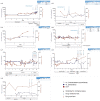

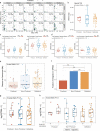
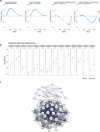
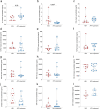




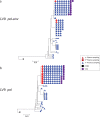
Update of
-
Viral and Host Mediators of Non-Suppressible HIV-1 Viremia.medRxiv [Preprint]. 2023 Mar 31:2023.03.30.23287124. doi: 10.1101/2023.03.30.23287124. medRxiv. 2023. Update in: Nat Med. 2023 Dec;29(12):3212-3223. doi: 10.1038/s41591-023-02611-1. PMID: 37034605 Free PMC article. Updated. Preprint.
References
-
- Laprise C, de Pokomandy A, Baril JG, Dufresne S, Trottier H. Virologic failure following persistent low-level viremia in a cohort of HIV-positive patients: results from 12 years of observation. Clin. Infect. Dis. 2013;57:1489–1496. - PubMed
-
- Dharan NJ, Cooper DA. Long-term durability of HIV viral load suppression. Lancet HIV. 2017;4:e279–e280. - PubMed
MeSH terms
Substances
Grants and funding
- 75N91019D00024/CA/NCI NIH HHS/United States
- R37 AI039394/AI/NIAID NIH HHS/United States
- U54 AI170791/AI/NIAID NIH HHS/United States
- UM1 AI068634/AI/NIAID NIH HHS/United States
- UM1 AI164560/AI/NIAID NIH HHS/United States
- UM1 AI106701/AI/NIAID NIH HHS/United States
- P30 AI036219/AI/NIAID NIH HHS/United States
- UM1 AI068636/AI/NIAID NIH HHS/United States
- T32 AI007387/AI/NIAID NIH HHS/United States
- DP2 AI154421/AI/NIAID NIH HHS/United States
- P01 AI169768/AI/NIAID NIH HHS/United States
- P30 AI060354/AI/NIAID NIH HHS/United States
LinkOut - more resources
Full Text Sources
Medical
Molecular Biology Databases
Research Materials

